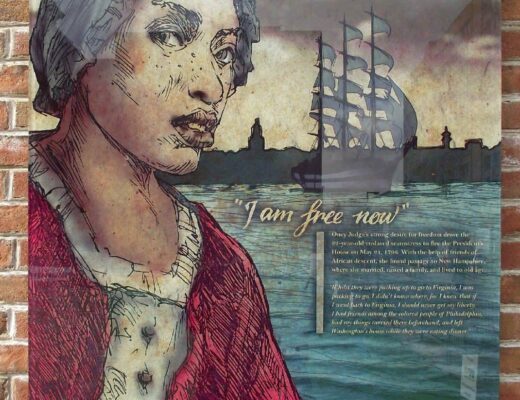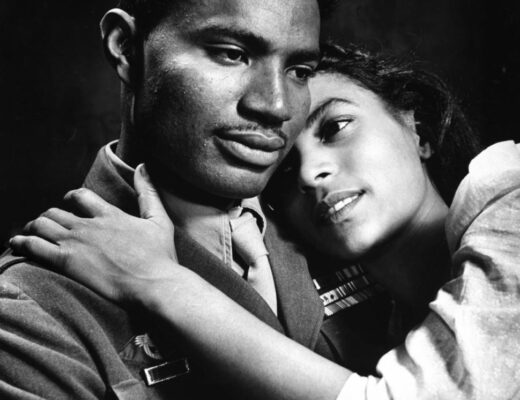Attorney. Priest. Civil Rights Architect
Pauli Murray was born in Baltimore, Maryland on November 20, 1910, the fourth of six children to Agnes Fitzgerald and William Murray. Tragically, Agnes Fitzgerald Murray died of a cerebral hemorrhage in 1914. William Murray, was a teacher and later a principal in the Baltimore public school system. He suffered from depression exacerbated by the long-term effects of typhoid fever and was eventually confined to Crownsville State Hospital where he was murdered by a white guard in 1923. Orphaned at a young age, Murray went to live with her aunt and namesake, Pauline Fitzgerald Dame, and her grandparents, Robert George and Cornelia Smith Fitzgerald, in Durham, North Carolina.
After graduating from Hillside High School in 1926 with a certificate of distinction, Murray moved to New York City. S/he* attended Hunter College and financed their* studies with various jobs, ultimately graduating in 1933 with a degree in English Literature. It was at this time and throughout the 1930s that Murray’s struggles with gender—and their resulting expansive view of gender itself—became central to their life. S/he changed their birth name from “Anna Pauline” to “Pauli.” It was at this point in their life that Murray pursued gender-affirming treatments, including hormone therapy, which s/he was denied. At the same time, Murray worked for the Works Project Administration (WPA) and as a teacher at the New York City Remedial Reading Project. S/he wrote fervently; Pauli’s articles and poems were published in various magazines including Common Sense and The Crisis, a publication of the NAACP.
Murray quickly became involved in the civil rights movement. In 1938, s/he began a campaign to enter graduate school at the all-white University of North Carolina. Despite a lack of support from the NAACP, Murray’s own media campaign received national publicity. During this campaign, Murray developed a life-long friendship and correspondence with the first lady at the time, Eleanor Roosevelt.
A member of the Fellowship of Reconciliation (FOR), Murray worked to end segregation on public transport. In March 1940, s/he was arrested and imprisoned for refusing to sit at the back of a bus in Richmond, Virginia. In 1941, Murray enrolled at the law school at Howard University with the intention of becoming a civil rights lawyer. The following year s/he joined George Houser, James Farmer and Bayard Rustin, to form the nonviolence-focused Congress of Racial Equality (CORE).
Pauli Murray’s writing continued to influence and shift the movement for justice. In 1943, Murray published two important essays on civil rights: “Negroes Are Fed Up” in Common Sense, and an article about the Harlem race riot in the socialist newspaper, New York Call.
In 1944, Pauli Murray graduated at the top of their law school class from Howard University. It was at Howard that s/he also became acutely aware of the oppression s/he faced as a woman**, coining the term “Jane Crow,” to describe their experience. The Rosenwald Fellowship was awarded to the valedictorian, and previous top graduates had used the fellowship to attend Harvard University. Despite winning the fellowship, Murray was rejected from Harvard Law School due to her gender—echoing previous rejections based on race, sex, sexual orientation and gender identity that Murray experienced. Instead, Murray went to the University of California Boalt School of Law where s/he received an LLM (Master of Laws) degree. Their master’s thesis was titled The Right to Equal Opportunity in Employment.
After graduation, Murray returned to New York City and provided support to the growing civil rights movement. Her book, States’ Law on Race and Color, was published in 1951 thanks to the United Methodist Women who commissioned the work. Thurgood Marshall, head of the legal department at the NAACP described the book as the “Bible” for civil rights litigators.
In 1960, Murray travelled to Ghana to explore their African cultural roots and teach law. When Murray returned, she enrolled at Yale Law School where she studied for the JSD degree and mentored several young women activists, including Marian Wright Edelman, Eleanor Holmes Norton and Patricia Roberts Harris who all became leaders in their own right.
President John F. Kennedy appointed Pauli Murray to the Committee on Civil and Political Rights as a part of his Presidential Commission on the Status of Women. In the early 1960s, Murray worked closely with A. Phillip Randolph, Bayard Rustin and Martin Luther King, but was critical of the way that men dominated the leadership of these civil rights organizations. In August 1963, she wrote to Randolph and asserted that she had “been increasingly perturbed over the blatant disparity between the major role which Negro women have played and are playing in the crucial grass-roots levels of our struggle and the minor role of leadership they have been assigned in the national policy-making decisions.”
Pauli Murray joined Betty Friedan and others to found the National Organization for Women (NOW) in 1966, but later moved away from a leading role because she did not believe that NOW appropriately addressed the issues of Black and working-class women.
From 1968 to 1973, Dr. Pauli Murray served as a faculty member at Brandeis University teaching an early American Studies program. In 1973, following the death of her longtime partner Irene Barlow, Murray left her tenured position to become a candidate for ordination at General Theological Seminary. In 1977, Pauli Murray became the first African American woman in the US to become an Episcopal priest after the church changed its policy. Pauli Murray died of cancer in Pittsburgh on July 1, 1985. Her autobiography, Song in a Weary Throat: An American Pilgrimage, was published posthumously in 1987. The book was re-released as Pauli Murray: The Autobiography of a Black Activist, Feminist, Lawyer, Priest and Poet in 1987, and was republished under its original title with a new introduction by in 2018.
Source: paulimurraycenter.com
Grab a copy of her autobiography here:





No Comments